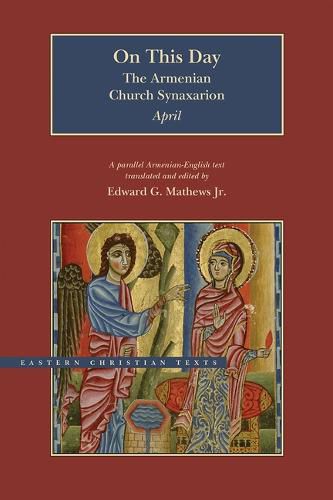Readings Newsletter
Become a Readings Member to make your shopping experience even easier.
Sign in or sign up for free!
You’re not far away from qualifying for FREE standard shipping within Australia
You’ve qualified for FREE standard shipping within Australia
The cart is loading…






The Yaysmawurk’ is a liturgical collection of brief saints’ lives arranged according to the day on which they were celebrated in the annual church calendar. The name comes from the first words of most of the daily entries: Y-aysm awur, that is, On this day … The collection was part of the great and varied Armenian liturgical tradition from the turn of the first millennium. The first Yaysmawurk’ was translated from an existing Greek liturgical collection (the Synaxarion, where the lives are all collected ). In fact, it is common knowledge that this Greek collection was the basis for nearly all such liturgical collections of the lives of the saints throughout the early Christian world. However, it was not a mere translation. Rather, it constituted a logical culmination of a long and steady development in the Armenian Church of what scholars today like to call the cult of the saints.
$9.00 standard shipping within Australia
FREE standard shipping within Australia for orders over $100.00
Express & International shipping calculated at checkout
The Yaysmawurk’ is a liturgical collection of brief saints’ lives arranged according to the day on which they were celebrated in the annual church calendar. The name comes from the first words of most of the daily entries: Y-aysm awur, that is, On this day … The collection was part of the great and varied Armenian liturgical tradition from the turn of the first millennium. The first Yaysmawurk’ was translated from an existing Greek liturgical collection (the Synaxarion, where the lives are all collected ). In fact, it is common knowledge that this Greek collection was the basis for nearly all such liturgical collections of the lives of the saints throughout the early Christian world. However, it was not a mere translation. Rather, it constituted a logical culmination of a long and steady development in the Armenian Church of what scholars today like to call the cult of the saints.